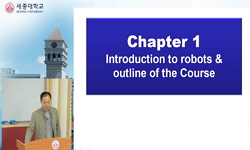Objective: The purpose of this study was to investigate the effect of robot arm reach training on upper extremity functional movement in chronic stroke survivors. Design: One group pretest-posttest design. Methods: Thirteen chronic stroke survivors pa...
http://chineseinput.net/에서 pinyin(병음)방식으로 중국어를 변환할 수 있습니다.
변환된 중국어를 복사하여 사용하시면 됩니다.
- 中文 을 입력하시려면 zhongwen을 입력하시고 space를누르시면됩니다.
- 北京 을 입력하시려면 beijing을 입력하시고 space를 누르시면 됩니다.

Effect of robot arm reach training on upper extremity functional movement in chronic stroke survivors: a preliminary study
한글로보기https://www.riss.kr/link?id=A106330631
- 저자
- 발행기관
- 학술지명
- 권호사항
-
발행연도
2019
-
작성언어
English
- 주제어
-
등재정보
KCI등재
-
자료형태
학술저널
-
수록면
93-98(6쪽)
- 제공처
-
0
상세조회 -
0
다운로드
부가정보
다국어 초록 (Multilingual Abstract)
Objective: The purpose of this study was to investigate the effect of robot arm reach training on upper extremity functional movement in chronic stroke survivors. Design: One group pretest-posttest design. Methods: Thirteen chronic stroke survivors participated in this study. Robot arm reach training was performed with a Whole Arm Manipulator (WAM) and a 120-inch projective display to provide visual and auditory feedback. During the robotic arm reach training, WAM provided gravity compensation and assist-as-needed (AAN) force according to the robot control mode. When a participant could not move the arm toward the target for more than 2 seconds, WAM provided AAN force to reach the desired targets. All patients participated in the training for 40 minutes per day, 3 times a week, for 4 weeks. Main outcome measures were the Fugl-Meyer Assessment (FMA), Action Research Arm Test (ARAT) and Box and Block Test (BBT) to assess upper extremity functional movement. Results: After 4 weeks, significant improvement was observed in upper extremity functional movement (FMA: 42.15 to 46.23, BBT: 12.23 to 14.00, p<0.05). In the subscore analysis of the FMA upper extremity motor function domains, significant improvement was observed in upper extremity and coordination/speed units (p<0.05). However, there were no significant differences in the ARAT. Conclusions: This study showed the positive effects of robot arm reach training on upper extremity functional movement in chronic stroke survivors. In particular, we confirmed that robot arm reach training could have a positive influence by leading to improvement of motor recovery of the proximal upper extremity.
동일학술지(권/호) 다른 논문
-
- 물리치료재활과학회
- Jung-Eun Song
- 2019
- KCI등재
-
The validity and reliability of the Healthy Lifestyle Screening Tool
- 물리치료재활과학회
- Cheong Hoon Kim
- 2019
- KCI등재
-
- 물리치료재활과학회
- Bo Ra Kang
- 2019
- KCI등재
-
- 물리치료재활과학회
- Suyoung Shima
- 2019
- KCI등재





 ScienceON
ScienceON






